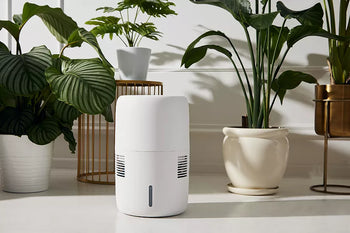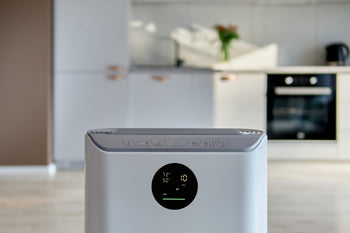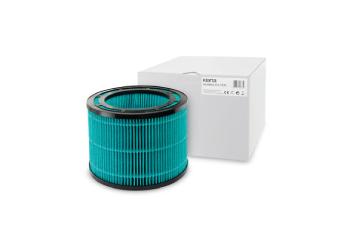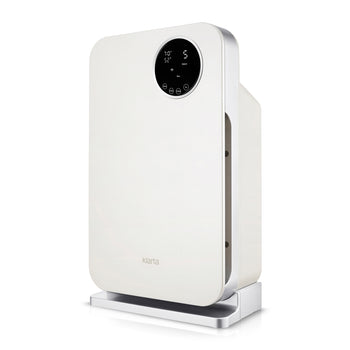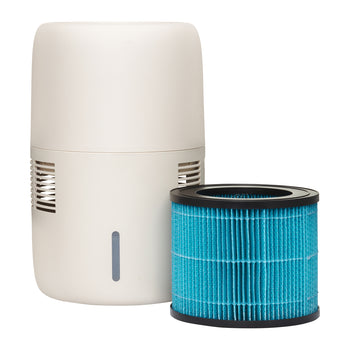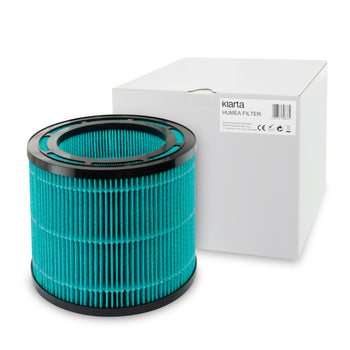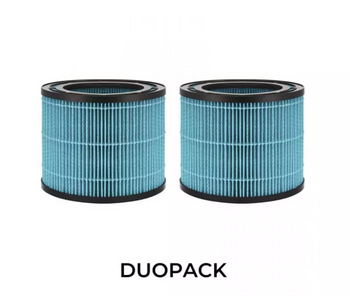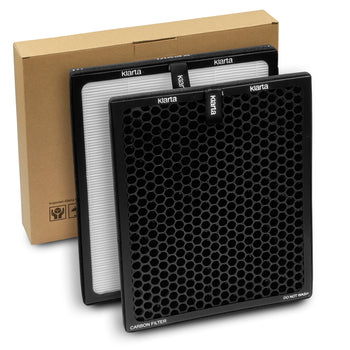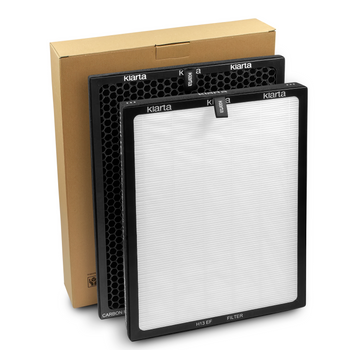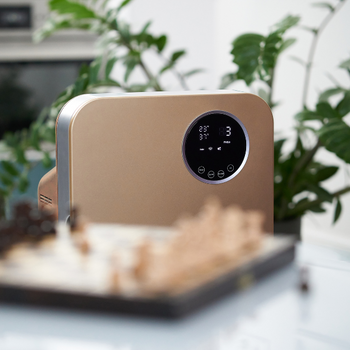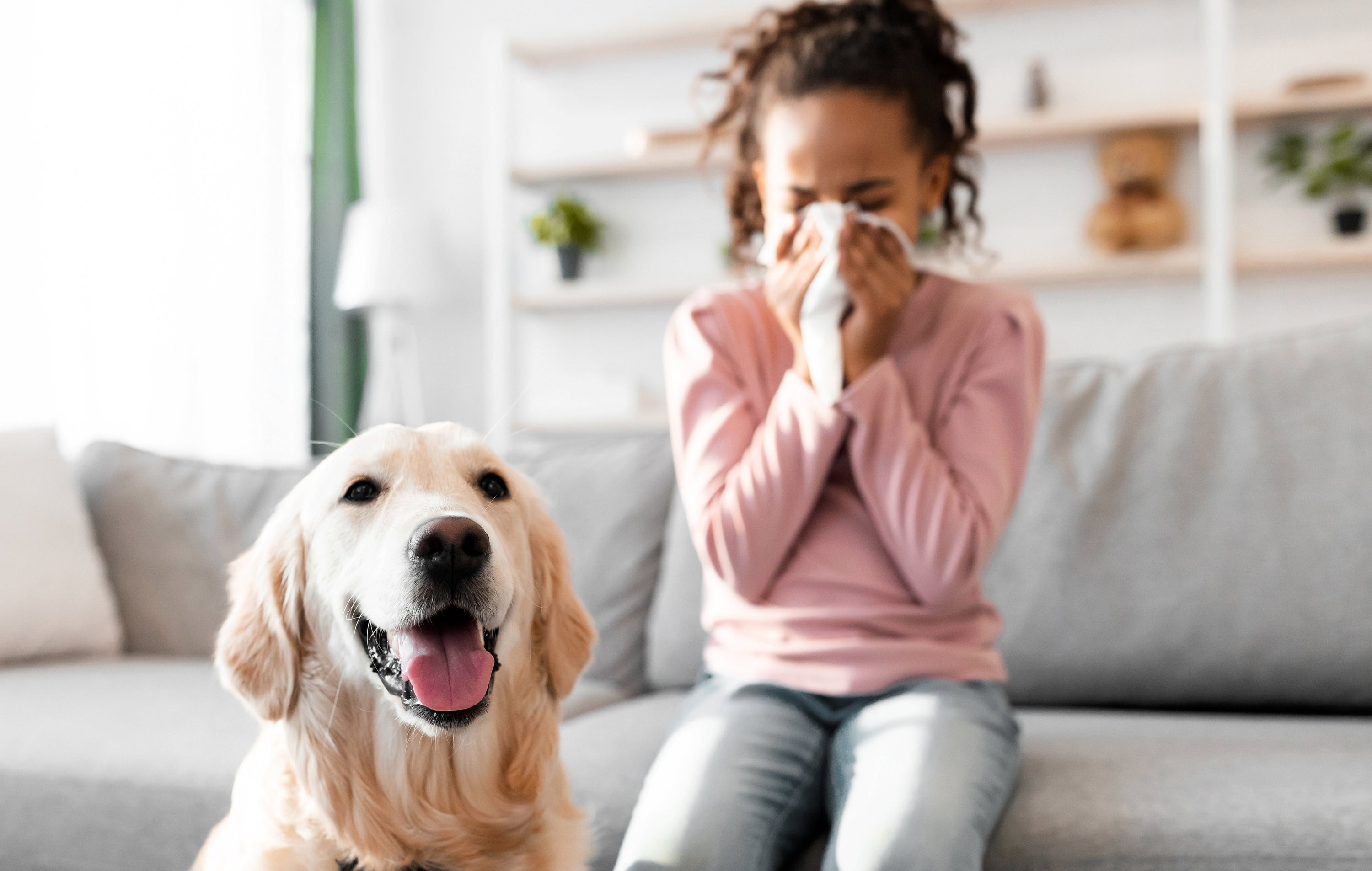
Klarta air humidifier for allergy sufferers? Allergy relief in minutes
Allergy relief and less frequent infections
Does a humidifier help with allergies? How does a humidifier relate to dust mite allergies? What humidifier should allergy sufferers choose?
According to research from the ECAP (Epidemiology of Allergic Diseases in Poland) program, over 40% of Polish men and women suffer from allergies.
Too low humidity dries out mucous membranes, weakening their defensive actions against allergens and viruses. Too high humidity promotes the growth of dust mites.
What humidity level is right for allergy sufferers and which humidifier to choose?

Does a humidifier help with allergies?
As early as the 1980s, scientists analyzed the impact of relative humidity on allergies and upper respiratory tract ailments (Arundel et al., 1986). Maintaining indoor humidity at an optimal level of 40-60% resulted in fewer absences among office workers.
Researchers also ruled out the possibility of mold and fungi development in conditions below 60% humidity, which should only appear at around 80% RH. The study results are not surprising. Humidifying the air:
- Regenerates tired throat and nose mucous membranes of allergy sufferers
- Thins secretions, reducing the feeling of a stuffy nose or throat
- Reduces persistent runny nose and cough symptoms
- Decreases asthma symptoms (Angelon-Gaetz et al., 2016)
- Reduces the risk of upper respiratory tract infections
- Lowers the number of allergens in the inhaled air as pollen sticks to water particles and falls to the floor or furniture
- Positively impacts sleep quality and daytime energy levels
- Increases work efficiency
It's important to note that both an air purifier for allergy sufferers and a humidifier help deal with airborne allergy symptoms. They are powerless against food or injection allergies. Therefore, this article focuses on airborne allergies.

Air humidity and allergy
Maintaining proper air humidity positively affects not only our skin condition or the appearance of houseplants but, most importantly, our upper respiratory tract health. The glycan layers lining the throat and nose mucous membranes act as a natural barrier against viruses, bacteria, and harmful microorganisms.
When dried out, they lose their elasticity, unable to effectively defend against allergens, which our immune system mistakenly deems harmful. In dry air, lightweight dust mites and plant pollen float more easily.
These particles can easily enter our respiratory system, causing allergic reactions or upper respiratory tract infections.
In humid air, their specific gravity increases, causing many of these contaminants to settle on floors or furniture. By increasing air humidity, we can at least partially reduce allergy symptoms.
 What is the optimal humidity level for allergy sufferers?
What is the optimal humidity level for allergy sufferers?
The same as for everyone else. The optimal humidity level is considered to be between 40-60%. Various air pollutants (dust, suspended particles, allergens) float more easily in dry air.
Overly humid air, on the other hand, provides a favorable environment for mold and fungi spores. High room temperature and constant humidity above 60% also create a good environment for dust mites.
Air humidity and asthma
The humidity in the environment impacts the health and well-being of asthmatics. A 2016 study published in the National Library of Medicine examined how classroom humidity levels contributed to asthma symptoms among 122 American teachers.
For each teacher, the study lasted five days across 10 schools in North Carolina.
In dry rooms with relative humidity below 30%, the risk of developing asthma symptoms increased after just five days (relative risk 1.26 vs. 1). There was also a slight increase in the risk of cold or allergy symptoms (1.11 vs. 1).
Interestingly, the study also focused on the negative effects of too high air humidity, considered to exceed 50%. Overly humid air also increased the risk of asthma symptoms (1.26 vs. 1) and a minimal risk of cold or allergy symptoms (1.06 vs. 1).

What humidifier should allergy sufferers choose?
Evaporative air humidifiers are the safest and healthiest method to increase room humidity. In addition to full control over the humidity level, the device uses the natural process of water evaporation (evaporation).
Klarta evaporative humidifiers – the ideal choice for allergy sufferers
Klarta Humea WiFi humidifier – for bedrooms, children’s rooms, and smaller living rooms
Our smaller evaporative humidifier, Klarta Humea WiFi, is a compact device perfect for an apartment. With a humidification capacity of 300 ml/h, it is suitable for most standard rooms and can handle humidifying areas up to 474 ft².
Five features of Klarta Humea WiFi useful in an allergy humidifier:
- Hygienic and safe to use: The evaporative filter ensures the humidifier's mist is free of harmful compounds, making it completely safe for household members.
- Easy to use: Maintenance involves refilling the water tank, cleaning the tank, and periodically removing limescale from the filter.
- Equipped with a hygrostat and hygrometer: Easy reading and setting of the air humidity level.
- Quiet operation: Klarta Humea WiFi operates quietly when needed, generating 24 dB and 31 dB noise levels on the first and second speeds, respectively, ensuring comfortable use and undisturbed rest.
- Equipped with Wi-Fi and mobile app: Humea WiFi, along with Klarta air purifiers, ensures comprehensive air quality management in the home.
How to hygienically use a Klarta air humidifier for allergy sufferers
1. Regularly replace the water in the tank using tap water.
2. Do not use the same water for more than 24 hours. If some water remains in the tank after a day, pour it out and refill with fresh water.
3. When adding fresh water, turn the filter "upside down" so that the part that was previously on top is now submerged.
4. Every 2-3 days, rinse the filter under running water, directing the water stream from the inside out.
5. At least once a week, clean the tank, float, and plastic filter parts with warm tap water and a bit of detergent.
6. If you take a break from using the humidifier for several hours or more, rinse the filter and clean the tank and plastic parts before use.
7. If limescale appears on the filter, soak it for 30 minutes in a solution of citric acid (60 grams of acid per 1 liter of water), then rinse thoroughly before use.
Learn more about the maintenance of the Klarta Humea WiFi humidifier in the article: How to Use the Klarta Humidifier so the Filter Lasts up to 6 Months?
Not just humidifying – air purifier for allergy sufferers
Before purchasing one of our humidifiers for allergy sufferers, check the humidity level in your apartment with a hygrometer. Repeat this measurement several times, depending on the weather outside. If the average readings hover around 40% or less, it is definitely worth getting an air humidifier.
However, if the air humidity is consistently at 50, 55, or 60%, you might need an air purifier more, which will remove troublesome allergens: plant pollen, house dust mites, and animal saliva proteins.
Sources:
- Angelon-Gaetz, Kim A et al. “The Study of Humidity Levels in Classrooms and Their Impact on Respiratory Disease Symptoms in Teachers.”
Angelon-Gaetz, Kim A et al. “The Study of Humidity Levels in Classrooms and Their Impact on Respiratory Disease Symptoms in Teachers.”
- Unknown Author. “When Should I Use a Humidifier vs. an Evaporator?” Medical News Today. medicalnewstoday.com. Accessed: 10.09.2023.
FAQ – Frequently Asked Questions
1. Is an Air humidifier good for allergy sufferers?
Definitely, yes. An evaporative air humidifier helps alleviate allergy symptoms, including runny nose, cough, and dry throat feeling, and reduces the susceptibility to upper respiratory tract infections.
2. Which humidifier for allergy sufferers?
Evaporative air humidifiers are a safe, hygienic way to increase humidity levels. They provide cool, invisible mist free of toxins and minerals found in water. They are easy to maintain and effectively control room humidity levels.
3. Can an air humidifier run all night?
Absolutely. Humidified air facilitates falling asleep, reduces snoring, and improves sleep quality.
